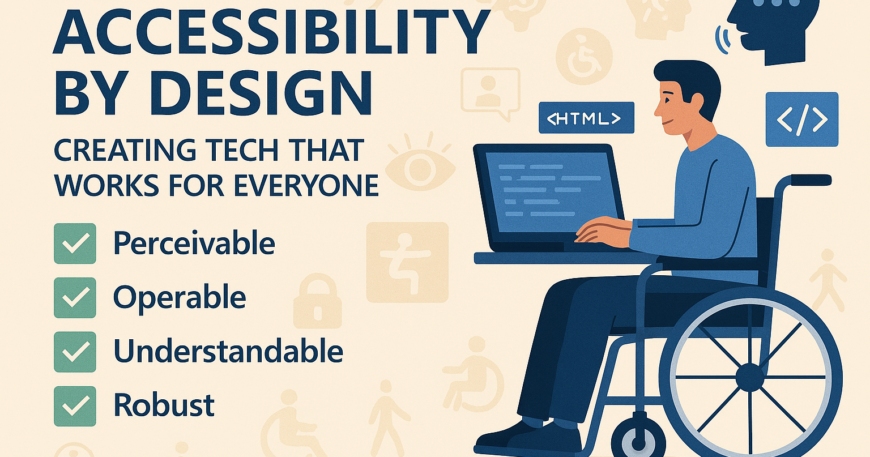In today’s digital-first world, accessibility is not just a feature it’s a fundamental responsibility. As Microsoft Partners, we have a unique opportunity to lead the way in building inclusive technology that empowers every person, regardless of ability.
Why Accessibility Matters
There are millions of people globally live with some form of disability. Whether it’s visual, auditory, cognitive, or motor-related, these challenges can make interacting with technology difficult unless we design with accessibility in mind.
Accessible tech isn’t just about compliance; it’s about creating equal opportunities, enhancing user experience, and expanding market reach. When we design for inclusion, we innovate for everyone.
Accessibility by Design: Key Principles
To truly embed accessibility into our solutions, we must shift from retrofitting to designing with accessibility from the start. Here are some core principles:
- Perceivable: Ensure content is presented in ways users can perceive (e.g., alt text for images, captions for videos).
- Operable: Make all functionality available via keyboard and assistive technologies.
- Understandable: Use clear language, consistent navigation, and helpful error messages.
- Robust: Build solutions that work across a wide range of devices and assistive tools.
Microsoft’s Commitment to Accessibility
Microsoft has long championed accessibility, with built-in features like:
- Immersive Reader – Helps users with dyslexia or visual impairments read content more easily.
- Live Captions in Teams – Supports hearing-impaired users during meetings.
- Accessibility Insights – A free tool for developers to test and improve accessibility in web and desktop apps.
Partners can leverage these tools to enhance their own offerings and ensure inclusive experiences.
Real-World Use Cases
Case Study: Elle-Mae Taylor’s Journey with Immersive Reader
Source: Microsoft Education Blog
Summary: Elle-Mae, a university student in the UK, discovered she had dyslexia and found Immersive Reader to be a transformative tool. It helped her overcome learning challenges, boosted her confidence, and enabled her to succeed academically.
Partnering for Impact
IAMCP and Microsoft Partners are uniquely positioned to drive change. By sharing best practices, collaborating on inclusive projects, and advocating for accessibility, we can build a tech ecosystem that truly works for everyone.
Let’s commit to Accessibility by Design—not just because it’s the right thing to do, but because it leads to better, smarter, and more impactful technology.




